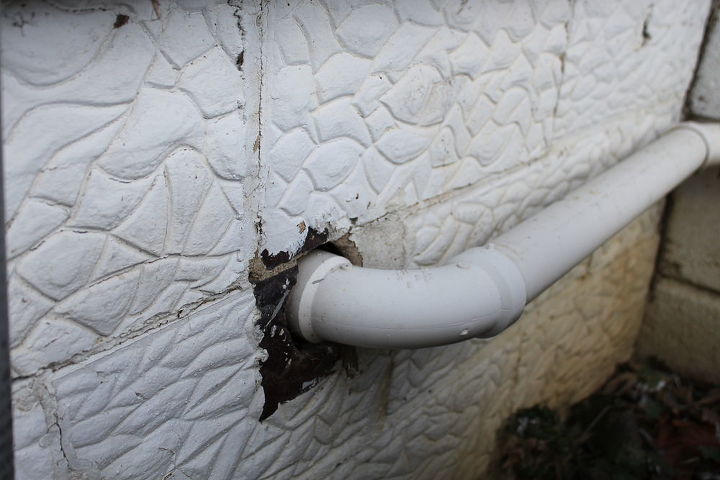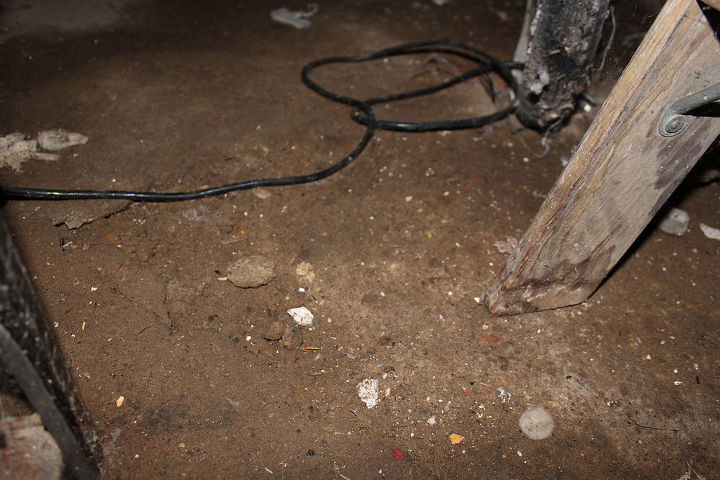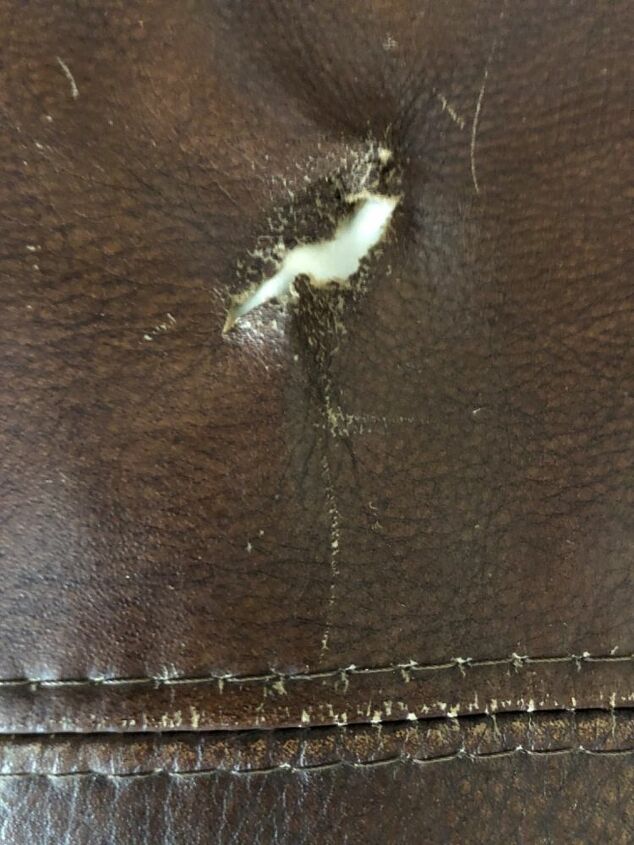Hello HomeTalkers, I live in old farmhouse built in the early 1900s.

-
Sarah, it is certainly wise to begin with any foundation repairs first. As to the one hole through the wall, fill it with expanding foam. Cut away the excess after it dries, and caulk it up so it looks better. As to the rest of the repairs, I would suggest calling in a professional to get a better look at things. Have a few different ones give their suggestions, solutions and cost estimates.
 Dan's of Central Florida, Inc.
on Nov 12, 2011
Helpful Reply
Dan's of Central Florida, Inc.
on Nov 12, 2011
Helpful Reply -
-
The crack in the foundation is old but still active movement. This can be told by the photo alone. Notice that the crack is not filled with paint. Indicating that it opened up after it was last painted. Also note that the crack has worn edges. This tells us that this wall was painted a long time ago as any new cracks the edge of the block would have sharp edges on it. The next photo does require some caulk or perhaps some spray foam then a layer of caulk over it The photo of the basement floor indicated to me that the floor has flooded on occasion as seen by the stains on the board sitting on the floor. It appears that the basement is suffering from water intrusion. From what, cannot say without seeing more or hearing more about the home. But in any case. This water is causing the cracks in the foundation which until the water issue is controlled will not stop getting bigger. Based on the age of the home. I would address the water first. You can do all sorts of repairs inside and out. But if you do not correct this issue first. You will find yourself doing those repairs over again. The floor issue is primarily due to the age of the home. Many years ago basements were not used for anything other then to house heat and utilities and perhaps store garden produce and canning supplies. It was not until early 70's or so that the basement began to become useful space and people began to move into those areas. So when the floor was put in, they did not bother to construct the basement for living, but just to clean it up. Therefore they did not put down plastic, or gravel or remove any expansive clay materials. The result is as the floor gets wet and then dries the clay based materials that are covered swell and shrink resulting in hollow areas damaged cement and all sorts of mess as you see it now. The only way to fix this is to stop the water from getting in. This can be done properly by excavation on the outside of the house and proper water proofing materials. Or the next method of water control system. Using a interior water control pipe and sump pump placed next to but above the foundation footing. Once you have solved the water issue, you then need to dig out the clay based soil down several inches. Then replace with stone, plastic and new cement. All of this is a lot of work and expense. However the water, foundation and the floor is critical to making the home more liveable and healthy so your future projects will not only look better but last. The pipe that runs through the wall is very common as the house becomes Swiss cheese from all the modifications done to it over the many years it has been there. That oftentimes is what makes working on older homes so expensive is that all the people who have worked on it have damaged it in one fashion or another by cutting into the framework and causing structural issues. You need to be sure that any advice that you get on repairs comes from those who understand how to properly repair older homes. Oftentimes the results can be disastrous if the person is applying newer methods of repairs to an older home. Sometimes newer materials or repair methods may not always be successful on older homes as they would be on newer ones.
 Woodbridge Environmental Tiptophouse.com
on Nov 12, 2011
Helpful Reply
Woodbridge Environmental Tiptophouse.com
on Nov 12, 2011
Helpful Reply -
-
I would have to agree with the statement that you made about the basement suffering from water intrusion. In fact, I would assume the source of water intrusion is the waste water from the toilet and possibly the sinks and such. I say this because my basement reeked of fecal matter, so I thought that possibly my sewer was full. I called a professional to come and clean my septic. However, he told and showed me that it was not full. As a result, we thought that the pipes were possibly lodged, so we sent a "snake" detector. No luck. The fecal matter smell dissipated; I hate to say this, but I avoid flushing. If it is yellow let it mellow-right? Thank you for the thorough response. I will be sure to post updates.
 Sarah M
on Nov 13, 2011
Sarah M
on Nov 13, 2011
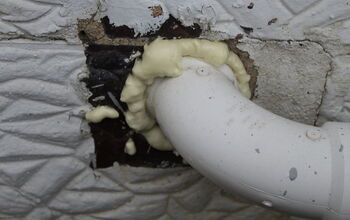 Helpful Reply
Helpful Reply -
-
Sara, I got to say that I had some concern about the cast iron pipe that enters into the basement floor area. Did he check this pipe as well? There can be a crack. Rust stains on the outside can come from condensation as well as leaks in the cast itself. The smell should not just go away with a septic that is not full and then pumped. Do you have a septic or a cesspool system? The septic has a leach field for the effluent while the cesspool has open sides that allows water to seep out as it fills. If the smell went away my guess is you have a cesspool system and its leaching towards the house. How far away is the tank from the home?
 Woodbridge Environmental Tiptophouse.com
on Nov 14, 2011
Helpful Reply
Woodbridge Environmental Tiptophouse.com
on Nov 14, 2011
Helpful Reply -
-
I do not remember him checking the pipe. I know that there is also a hole that sometimes I have to push matter downward, if the problem creeps back. I will take a photo of it soon as I am able. I believe that I have a septic and problems with the flow of the matter. This is NOT good according to a class that I had in Urban Development. My professor explained, in one of his lectures, the two major factors (of a few others) that determines settlement are access to a stable water source and a way to get rid of waste. It seems from what we've been discussing that I have potentially two expensive catastrophes on my hand. Eep.
 Sarah M
on Nov 14, 2011
Helpful Reply
Sarah M
on Nov 14, 2011
Helpful Reply -
-
When your saying there is a hole that you need to push matter down can you just take a photo of that . There should be no holes at all in any of the pipes at all. If the flow going to the septic tank is poor, this would explain odors as everything backs up. Something just does not make sense.
 Woodbridge Environmental Tiptophouse.com
on Nov 14, 2011
Helpful Reply
Woodbridge Environmental Tiptophouse.com
on Nov 14, 2011
Helpful Reply -
-
I am back with picture (sorry, for the hiatus). The hole is on the basement flooring. In the hole there is a gap between two rusty pipes, so it makes me ask should there be a connecting piece to maintain a continuous flow of waste rather than having a "dumping ground". I am not professional, so this hole might have a bigger purpose than I know.
 Sarah M
on Nov 25, 2011
Sarah M
on Nov 25, 2011
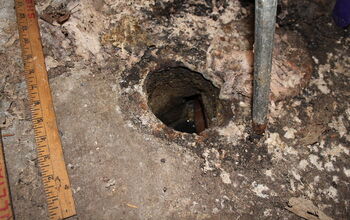 Helpful Reply
Helpful Reply -
-
That hole appears to be a old clean out or sewer pipe. It resembles rusted out cast iron pipe. There may be a U bend trap there that should be cleaned. I think you need to purchase a rubber plug perhaps a 4"one and place in in this hole and cap it off. That should stop the smell. On another note, you will need to remove the cement around this pipe and replace it with a proper one. If indeed this is a trap, it may be filled with debris that can be slowing the flow of raw sewage which is causing the backups out of this hole.
 Woodbridge Environmental Tiptophouse.com
on Nov 25, 2011
Helpful Reply
Woodbridge Environmental Tiptophouse.com
on Nov 25, 2011
Helpful Reply -
Related Discussions
How do I repair a small rip in my leather couch seat ?
Bummed out! One of the kids put their foot with a shoe on it, on the couch and created this tear in the seat cushion. I’m wondering if I can sew it, instead of pay ... See more
How do I remove shattered glass from a picture frame?
How do I remove scratches from a silver frame?
I have some scratches on my silver frame. Is there a way to remove them or make them not as noticeable?
How do you remove scratches on flatware?
The flatware that I use everyday have a lot of scratches, especially on the tines of the forks. Is there any way to remove or reduce these scratches other than buyin... See more
How to remove paint from hinges
how to remove paint from hinges on cabinets doors still attached . want to paint kitchen but so much painted over hinges , screws won't budge.will i need to cut aroun... See more

